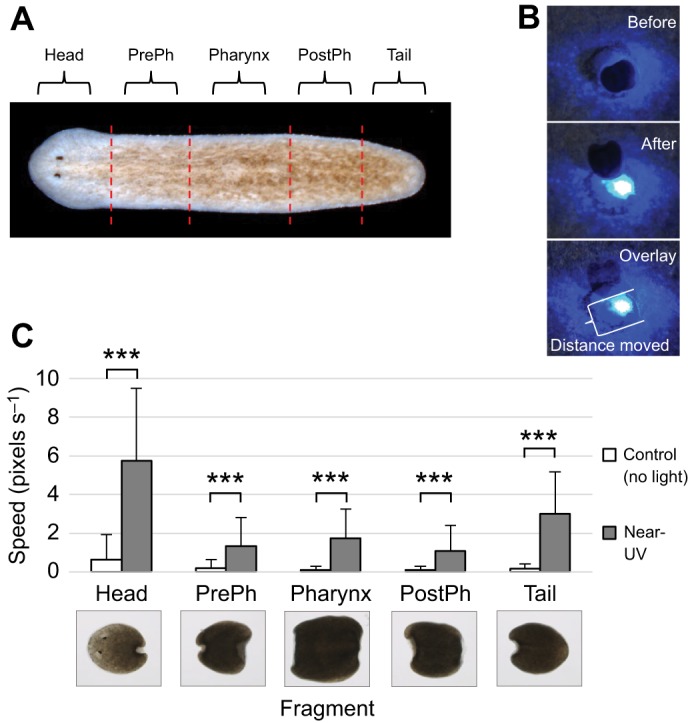Fig. 4.

Extraocular photoreception occurs along the entire body. Worm fragment assay, in which worms were cut into 5 fragments along the anterior–posterior axis and individual fragments were tested at 1–2 h post-amputation for extraocular photophobic behavioral responses to near-UV light. (A) Diagram of the amputation scheme and resulting fragments. (B) Photophobia was assessed by analyzing the speed of fragments moving out of the cone of light [distance moved by the most posterior edge of the fragment (bracket) divided by time]. (C) Graph of near-UV-light avoidance in worm fragments, showing that near-UV light causes a significant increase in speed for all fragments (n=20). PrePh, pre-pharyngeal; PostPh, post-pharyngeal. Statistics: two-tailed independent t-test; ***P<0.001 (as compared with no light controls); error bars=s.d.
